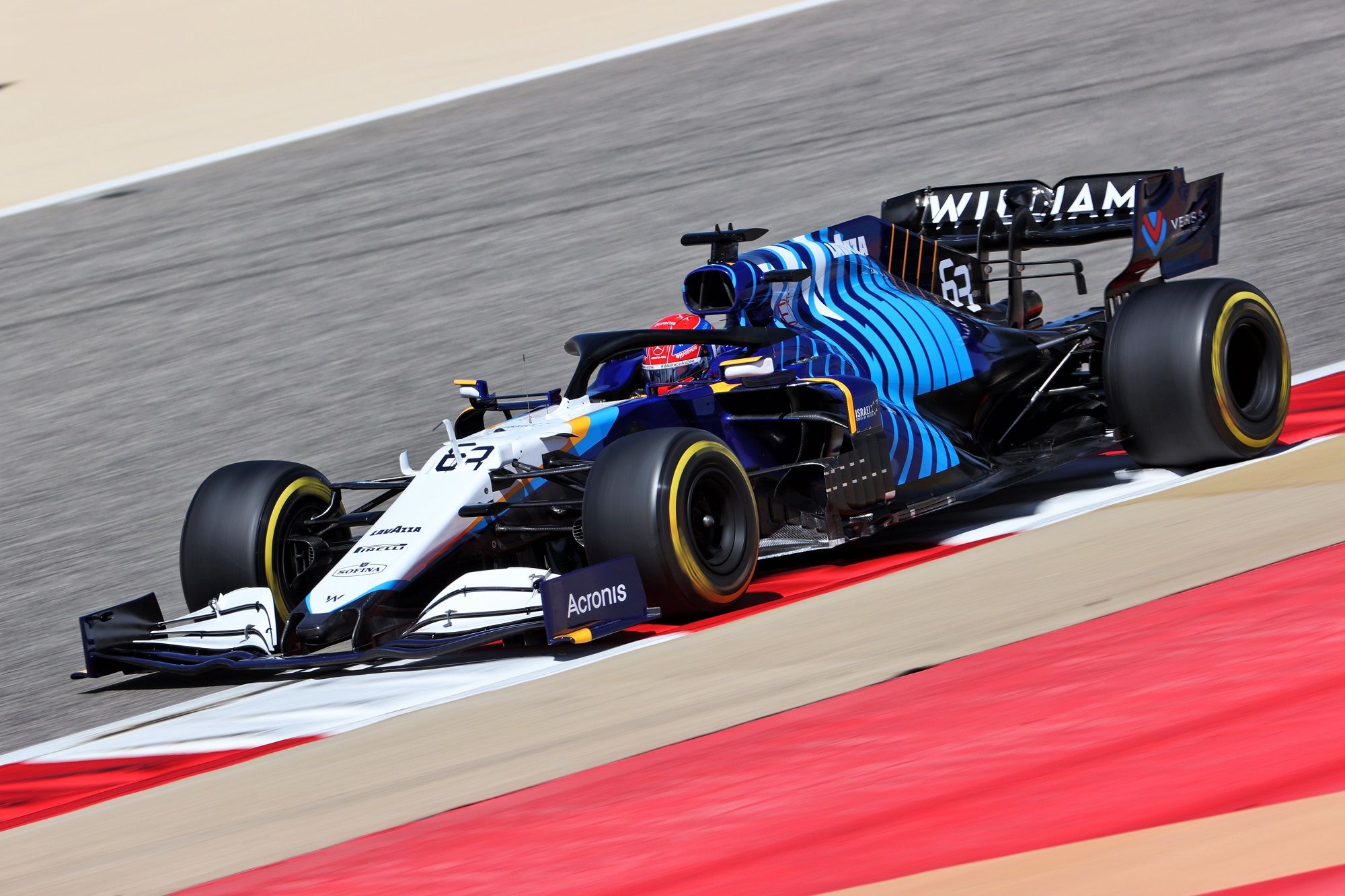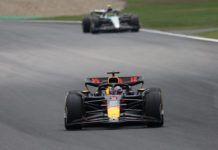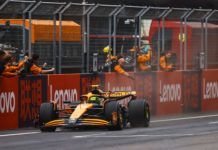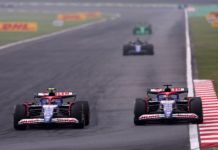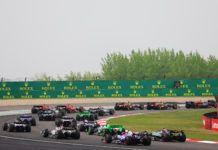Williams’ George Russell discusses his FW43B’s instability when wind is unfavorable, saying pursuing a sensitive aero philosophy was a conscious decision by the team.
In 2020, Williams finished last in the standings with zero points to their name – despite a car which appeared more competitive than its predecessor. After this result, Russell explains the team made a deliberate choice to pursue an aerodynamic concept that would mean instability in wind, but would ensure decent pace in the right conditions.
This will allow the team to ‘excel’ at certain rounds, Russell explains, increasing the likelihood of Williams bringing home points in 2021. “We’ve opted to go down a route to give more downforce,” the Brit began in a media session that included FormulaRapida.net
“At the expense of being more sensitive, that was our decision because we recognized that we only need a couple of — if we were consistently at a set pace, as we were last year, we consistently won’t be scoring points. You’ve only got to be fast at two races, and you will finish potentially eighth or ninth in the constructors’ championship.
“Haas scored three points last year, Alfa Romeo scored eight. We want to try to be as quick as possible when the stars align, and it is uncommon to have three days with the wind strength we saw here. Ultimately it was just a decision we made to be quick at some races,” Russell explained.
The result of this concept, though, is variable yaw angles and inconsistent grip when conditions are sub-optimal. Russell predicts a yo-yo-ing level of performance from Williams, with their season ‘in the hands of the wind’: “Our car is incredibly sensitive to the wind, and the conditions of the three days probably brought out the worst of the car,” he said.
“[That] has been positive, in a way, to analyse, but equally I think you’ll see our performance as a bit of a yo-yo this season, unfortunately quite often in the hands of the wind. The positives are that when the wind is in a favorable direction, the car is very fast.
“When we do go to a track where the winds are lower, a track where there’s maybe a bit more high speed, We talk about yaw angles, and the yaw angles [on the FW43B] get very high at low speed – especially when there’s a lot of wind. The positive is there is a very fast race car in there, but it’s kind of out of our hands whether [or not] we can excel.
“Had the wind been neutral for this test, our lap times would have been much faster,” Russell summed up. Adding more on the yaw angles coupled with the philosophy route and addressing where the car could be faster, he stated: “It is fingers crossed that we can cure it. But as we’ve alluded to, before, a lot of teams will be going quite early to the 2022 car, we will still be developing it.
“But something as the wind sensitivity is almost a philosophy change. And we’re too late into the development to change the philosophy. So as I said, these days brought up the worst of the car. But there has been positives, because when it was in, when there were corners that were normal, our car was actually very competitive.
“And I trust that when we go to a track for everything to be calmer, a little bit more enclosed, that’s where we can excel and I think maybe Imola could be a good one for us,” summed up Russell, who also noted that he has been speaking with the aero department already. However, it will be difficult to change whole lot and so they are banking on the strategy to score in maybe 10 races to keep their edge on the rivals.
“I’ve already been on the on the phone with the aero department just to give more in depth detail,” started Russell. “I guess we’ll have to wait and see, but equally, teams have their own philosophy. Some teams try to have good peak downforce, but maybe it’s a bit of fear in certain conditions where there is less downforce.
“Other teams try and have they call it a flat map, where it’s almost less downforce at peak conditions. But it is more consistent downforce throughout a corner phase, throughout different wind, throughout different conditions. Everybody’s got their own philosophy. And that’s why you see some weekends, some teams are quick and on some, they’re not.
“So, this wind sensitivity, it’s not the first time a team or car has had it. For us, maybe it is a bit more extreme than it has been the last two seasons. But equally, we could be sitting here at the end of the season and saying, we were very quick in 10 races and very slow in the remainder 13.
“But we managed to score points in those races we were quick and we managed to come home eighth in the championship. Therefore, that was a quick decision to go down that route. So there’s pros and cons to to every philosophy. Time will tell,” explained Russell.
Here’s lap count from Bahrain F1 Test
Here’s more details on Mercedes engine

